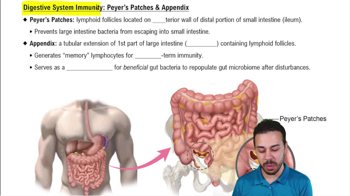More than one choice may apply.
Which of the following are part of MALT?
a. Tonsils
b. Thymus
c. Peyer’s patches
d. Any lymphoid tissue along the digestive tract
 Verified step by step guidance
Verified step by step guidance Verified video answer for a similar problem:
Verified video answer for a similar problem:



 4:34m
4:34mMaster Primary & Secondary Lymphoid Organs with a bite sized video explanation from Bruce Bryan
Start learning